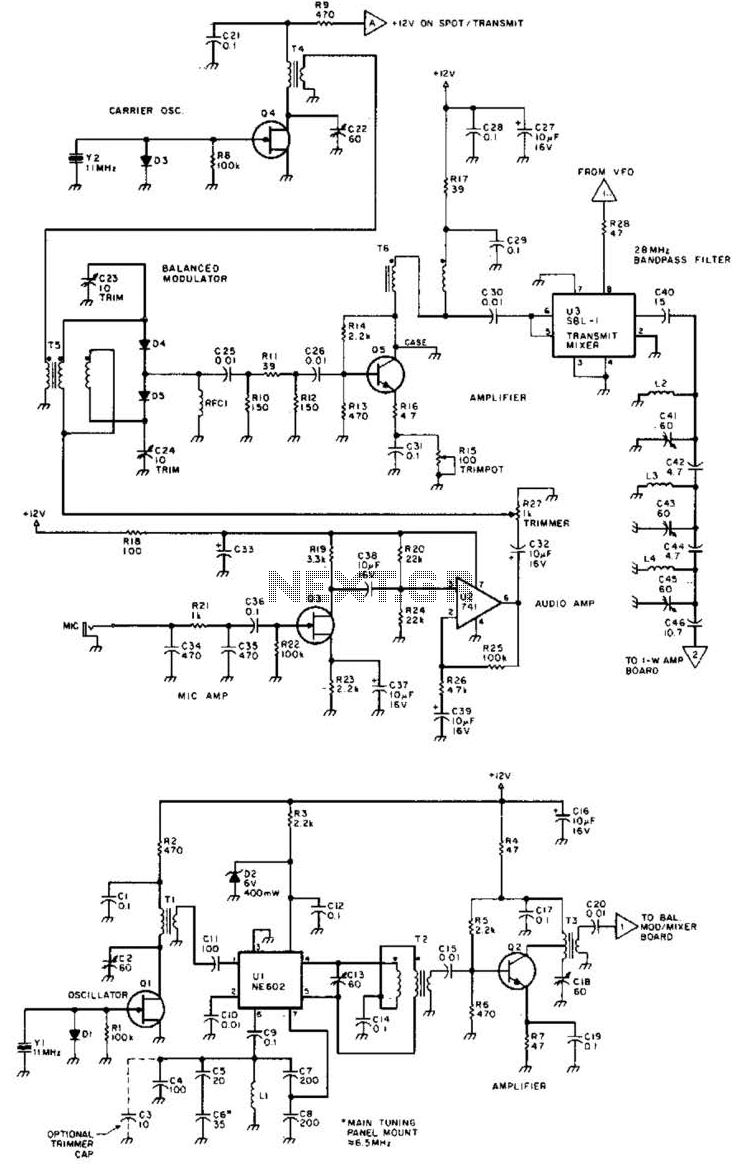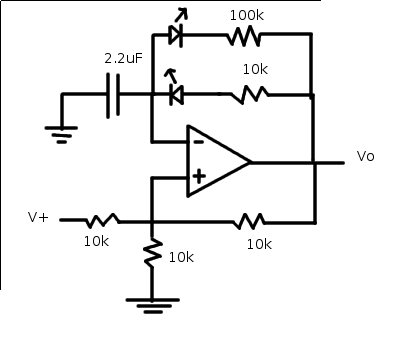
Thermostat Switch For Automotive Electric Fans Circuit

The circuit is based on a commercial temperature sensor (TS6178) and an MC3334P ignition chip. When the radiator temperature increases, the sensor pulls the base of Q2 low via Q1, which is wired as a diode. Q2's collector thus goes high and triggers IC1, which switches its pin 7 output high and turns on the fan motor via Q3.
The described circuit utilizes the TS6178 temperature sensor to monitor the radiator temperature. As the temperature rises beyond a predetermined threshold, the TS6178 outputs a low signal, which is directed to the base of transistor Q2 through Q1, configured as a diode for signal conditioning. This configuration ensures that Q2 operates in a switching mode.
When the base of Q2 receives a low signal, it allows current to flow from its collector to its emitter, effectively turning Q2 on. As a result, the collector voltage of Q2 rises, which serves as a trigger for the ignition chip MC3334P (IC1). The MC3334P is designed to respond to this high signal at pin 7, activating its output to drive the fan motor through transistor Q3.
Transistor Q3 acts as a power switch for the fan motor, allowing it to be turned on or off based on the signal received from IC1. This configuration ensures that the fan operates only when necessary, thereby enhancing the efficiency of the cooling system. The circuit is designed for reliability and responsiveness, providing an effective solution for maintaining optimal radiator temperatures in automotive or industrial applications.
In summary, this circuit effectively integrates a temperature sensing mechanism with an ignition control strategy to manage the operation of a fan motor in response to temperature changes, ensuring efficient thermal management. The circuit, is based on a commercial temperature sensor (TS6178) and an MC3334P ignition chip, When the radiator temperature increases, the sensor pulls the base of Q2 low via Ql, which is wired as a diode. Q2`s collector thus goes high and triggers IC1, which switches its pin 7 output high and turns on the fan motor via Q3. 🔗 External reference
The described circuit utilizes the TS6178 temperature sensor to monitor the radiator temperature. As the temperature rises beyond a predetermined threshold, the TS6178 outputs a low signal, which is directed to the base of transistor Q2 through Q1, configured as a diode for signal conditioning. This configuration ensures that Q2 operates in a switching mode.
When the base of Q2 receives a low signal, it allows current to flow from its collector to its emitter, effectively turning Q2 on. As a result, the collector voltage of Q2 rises, which serves as a trigger for the ignition chip MC3334P (IC1). The MC3334P is designed to respond to this high signal at pin 7, activating its output to drive the fan motor through transistor Q3.
Transistor Q3 acts as a power switch for the fan motor, allowing it to be turned on or off based on the signal received from IC1. This configuration ensures that the fan operates only when necessary, thereby enhancing the efficiency of the cooling system. The circuit is designed for reliability and responsiveness, providing an effective solution for maintaining optimal radiator temperatures in automotive or industrial applications.
In summary, this circuit effectively integrates a temperature sensing mechanism with an ignition control strategy to manage the operation of a fan motor in response to temperature changes, ensuring efficient thermal management. The circuit, is based on a commercial temperature sensor (TS6178) and an MC3334P ignition chip, When the radiator temperature increases, the sensor pulls the base of Q2 low via Ql, which is wired as a diode. Q2`s collector thus goes high and triggers IC1, which switches its pin 7 output high and turns on the fan motor via Q3. 🔗 External reference
Warning: include(partials/cookie-banner.php): Failed to open stream: Permission denied in /var/www/html/nextgr/view-circuit.php on line 713
Warning: include(): Failed opening 'partials/cookie-banner.php' for inclusion (include_path='.:/usr/share/php') in /var/www/html/nextgr/view-circuit.php on line 713





